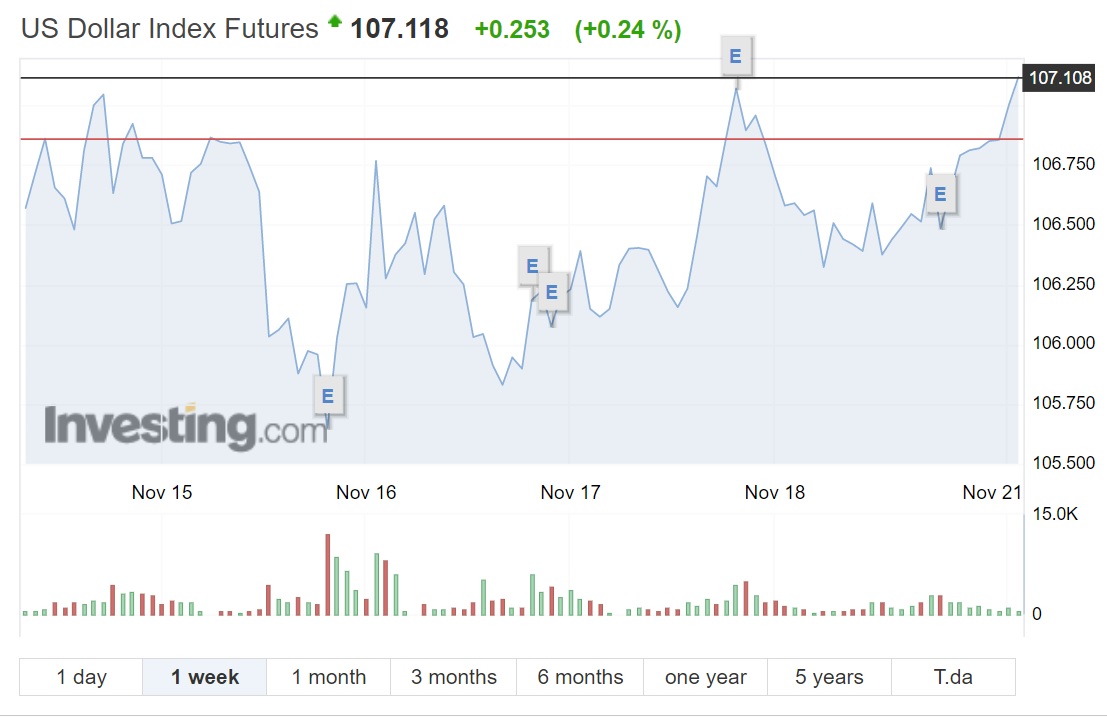Is the US dollar rally ending?
The US dollar fell sharply last week. It followed a sub-consensus US CPI print but, in truth, the US dollar was already on the backfoot. The question for many will be whether this is the long-awaited end of the dollar’s dramatic rally?

The Standard Bank’s one-year forecasts are for the euro to be 1.10, the yen at 130, and sterling/dollar 1.28.
>> USD/VND rate is expected to cool down in 2023
Mr. Steve Barrow, Head of Standard Bank G10 Strategy, said that the dollar’s sharp rally would come to an end. For instance, the Standard Bank’s one-year forecasts are for the euro to be 1.10, the yen at 130, and sterling/dollar 1.28. This being said, it has been anticipating more dollar strength first, and pitching the turnaround for the dollar in the spring, or perhaps the summer, of next year.
Why has the Standard Bank priced things this way? In Mr. Steve Barrow’s view, a number of conditions need to fall into place for the US dollar to start a long and meaningful decline. One of these is the end of the rate-hike cycle in the US and, this will likely be in the spring of next year once the fed funds target has reached the 5% region.
A second requirement is that inflation falls noticeably, particularly in the US, so that expectations of future rate cuts from the Fed really take hold, even though Mr. Steve Barrow doubts that the first cuts will be made until 2024. Again, he thinks that this should start coming through from next spring.
Thirdly, Mr. Steve Barrow thinks that a meaningful decline in the US dollar will only get going once the global economy starts to improve. On this score, he knows there’s a difficult winter ahead with many, if not most European countries likely to be sucked into recession as the energy crisis bites during the colder months. By next spring/summer things should start to look up and if that’s replicated on a wider basis then this period appears most likely to provide the fundamental backdrop for a fall in the dollar and recovery in “riskier” currencies.
Fourth, and most crucial requirement for US dollar weakness in Mr. Steve Barrow’s view is that asset prices, meaning both bonds and stocks, start to rally. But this is where the timing gets tricky. For if the macroeconomic and monetary policy picture looks set to improve from next spring, many investors are going to want to get in front of that through buying assets in advance.
>> Some signs of a turn for the US dollar
This “advance period” could be a few months, suggesting the rallies in asset prices could start early in 2023. But they could also start now as the market takes an inch of good news (lower US inflation) and runs a mile with it. That might seem risky. It was only a few months ago that the market reacted in a similar way to a sub-consensus print in the July CPI data. But not only was this a false dawn; we saw the Fed continue with aggressive rate hikes and the dollar’s slide in July and early August proved short lived. The same could happen now. So, there will be caution, but this caution has to be weighed against the “cheapness” of assets following the mauling over the past year, and the “expensiveness” of the dollar given its dramatic rally.

USD index dropped to 106.3 last week.
In other words, there will be a temptation to buy risk assets now and sell the dollar even if, once again, this proves a bit premature, simply because the downside to such action is seemingly limit ed given how “undervalued” assets have become and given that the prospects are still encouraging that the macro/monetary policy picture will be looking better around next spring.
Could the long-awaited dollar slide be in place now? Mr. Steve Barrow said that, absolutely it could. What’s the best way to play this environment? While there’s certainly an argument to try to ride a potential wave of asset price strength and dollar weakness now, it might be unwise to go all-in at this very early stage. For investors in bonds and stocks, he argues that some return to assets and away from cash is warranted right now, just as some return to short-dollar trades seems appropriate.
“The indicators we use to generate short-term currency trades have been flashing bearish signs for the dollar for a few weeks now. At first, they were modest, but now they are a lot stronger. We have lifted our forecasts for the dollar, but not significantly. Instead, we’d rather emphasise that the probability skew around these forecasts for the dollar has shifted to the downside”, said Mr. Steve Barrow.








